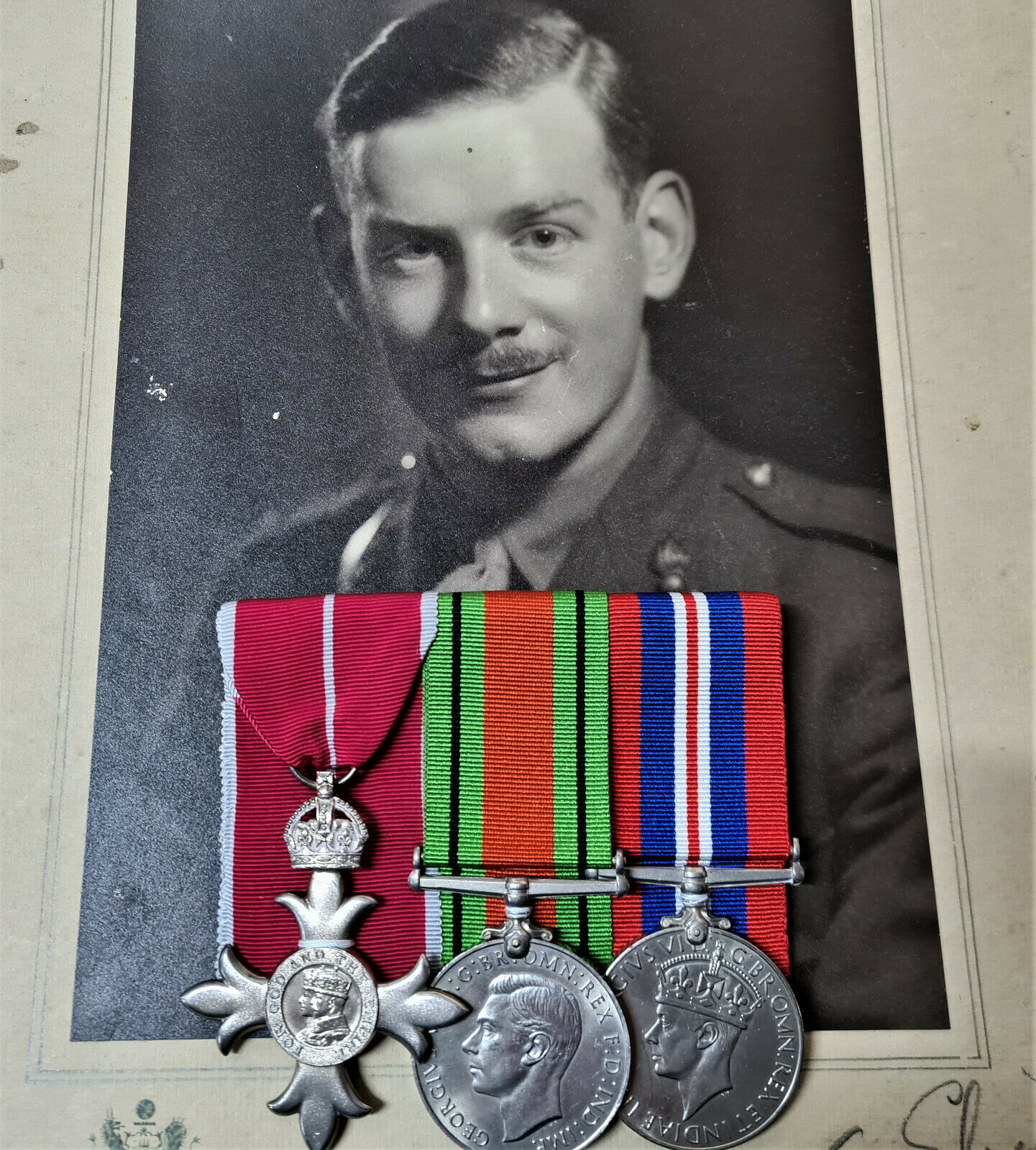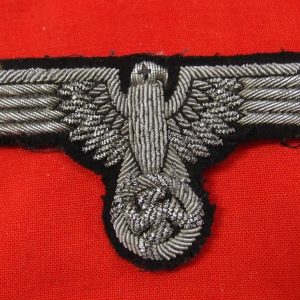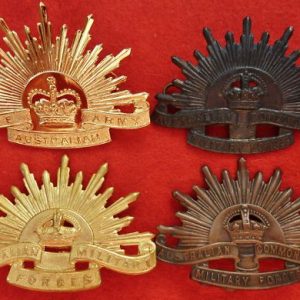SOLD
*SINKING GERMAN SHIP WW2 MBE MEDAL GROUP MAJOR MALLINSON DOVER COASTAL BATTERY
Offered is a 1946 M.B.E. (Military) medal group to Major Richard Mallinson, who was awarded his M.B.E. for his part in the sinking of the German blockade runner Munsterland on 20 January 1944. The Most Excellent Order of the British Empire, M.B.E. (Military) Member’s 2nd Type breast Badge, silver; Defence and War Medals 1939-45 all un named as issued. Court mounted for display. Comes with copy London Gazette, Ministry of Defence correspondence, photographs, newspaper articles, German account of the sinking of the Munsterland, theatre stage and screen items. M.B.E London Gazette 1 January 1946. Major Richard Frederick Adrian Mallinson was born in...
$625.25
SOLD
Offered is a 1946 M.B.E. (Military) medal group to Major Richard Mallinson, who was awarded his M.B.E. for his part in the sinking of the German blockade runner Munsterland on 20 January 1944.
The Most Excellent Order of the British Empire, M.B.E. (Military) Member’s 2nd Type breast Badge, silver; Defence and War Medals 1939-45 all un named as issued. Court mounted for display. Comes with copy London Gazette, Ministry of Defence correspondence, photographs, newspaper articles, German account of the sinking of the Munsterland, theatre stage and screen items.
M.B.E London Gazette 1 January 1946.
Major Richard Frederick Adrian Mallinson was born in 1919, he was commissioned 2nd Lieutenant Coastal Artillery School on 29 April 1941. He was stationed on the Dover Coastal Heavy Batteries for the Second World War. His award coming for the sinking of the blockade runner Munsterland on 20 January 1944. Post-war he went to the stage and screen with the B.B.C. Mallinson was scripted with David Jacobs for 'Make up Your Mind' in 1958, besides writing Cheshire Strife, which played at the Rex Theatre, Wilmslow. He died 29/7/1969 in Gloucester.
Batteries on both sides attacked shipping as well as bombarding the coastal towns and military installations. The British batteries consisted of 6 inch, 9.2 inch and 15 inch batteries. Although this happened off the French coast, the vessel Munsterland was sunk by Coast Artillery at Dover - after many unsuccessful attempts by the Royal Navy to intercept her on her voyage from the Pacific, and further attacks from torpedo boats and aircraft. Here's a post-war letter from a former German officer to a former 540 Coast Regiment officer regarding the sinking.
September 10th, 1954.
Dear Mr. Mallinson,
On the 6th September, I received your letter. As you are desirous of knowing the circumstances in connection with the sinking of the "Munsterland", I should like to give you the following report. I must say however in the first place that I am unable to remember the exact dates.
From August 1941, I was stationed as Artificer with the 4th Mine Sweeper speed-boat flotilla. I assisted in bringing through many vessels, but we were unlucky with the "Munsterland", It might well be said that the "Munsterland" was followed by a 'jinx'. The first time we convoyed the "Munsterland" the area off Boulogne was seething with fast vessels (M.T.B.'s?) so that our commanding officer was compelled to abandon the enterprise. After a few days, we should have tried again, but unfortunately it went very foggy and we had to go back to harbour. The sailors on the "Munsterland" were thoroughly 'fed-up'. In the long run everybody's nerves were on edge with continually coming out and going back again. Then the command came again to leave port and this I believe was on the 31st December 1943. Visibility on that particular night was rather poor. On top of that, the "Munsterland" met with a net-barrier, which had been put up outside the harbour entrance. Her propellor fouled the nets and thus it was impossible to manoeuvre her, and the ship drifted towards Cap Gris Nez.
Then the "Munsterland" was towed back to Boulogne. At the pier where the railway station used to be, the "Munsterland" was made fast. In order to free the propellor from the nets, the forward tanks were filled so as to facilitate work on the propellor. This work naturally took some considerable time. I believe that it was on the 31st December, but cannot be sure. After the "Munsterland" was put in order, we prepared to leave again. The convoy ships were mine-sweepers, mine detector vessels, reconnaissance ships and converted ferry-boats. Our vessel which was a mine-sweeper was in position astern of the "Munsterland". We had the task of laying silver-foil when we were within range of your Battery. We used to call your Battery "Suit-case Alley". Here in Germany, we used to call the big shells 'suit-cases'. When we saw your fire, we used to count up to 72. At 73, we heard the explosion. In order to put you off the scent, we sometimes sailed quickly, and sometimes slowly. At the same time we laid silver-foil in order that your Radar might be mis-directed (confused). Your shooting was sometimes accurate and sometimes too far ahead, until you recorded the first hit. The "Munsterland" was hit several times. Your fire was so well directed that our vessel was unable to reach the "Munsterland". Those shells which fell into the sea exploded on the bottom. Had they burst on the surface our boats would have looked like sieves. Your shells had no splinter effect. When a shell burst a considerable amount of mud rained down on the decks. Then the "Munsterland" began to sink, but still remained with the upper-structure above water. Some of the crew of the "Munsterland" were killed in the icy waters through heart-failure on account of plunging too quickly into the sea. After having taken off all the people, we made for Calais at full speed.
I trust, Mr. Mallinson, that the above will be useful information to you, and in closing beg to remain,
Yours truly,
Heinrich Ziemsen.
Bremen-Blumenthal,
Schwanewederstr. 74
| Weight | 0.5 kg |
|---|---|
| Dimensions | 26 × 36 × 2 cm |





